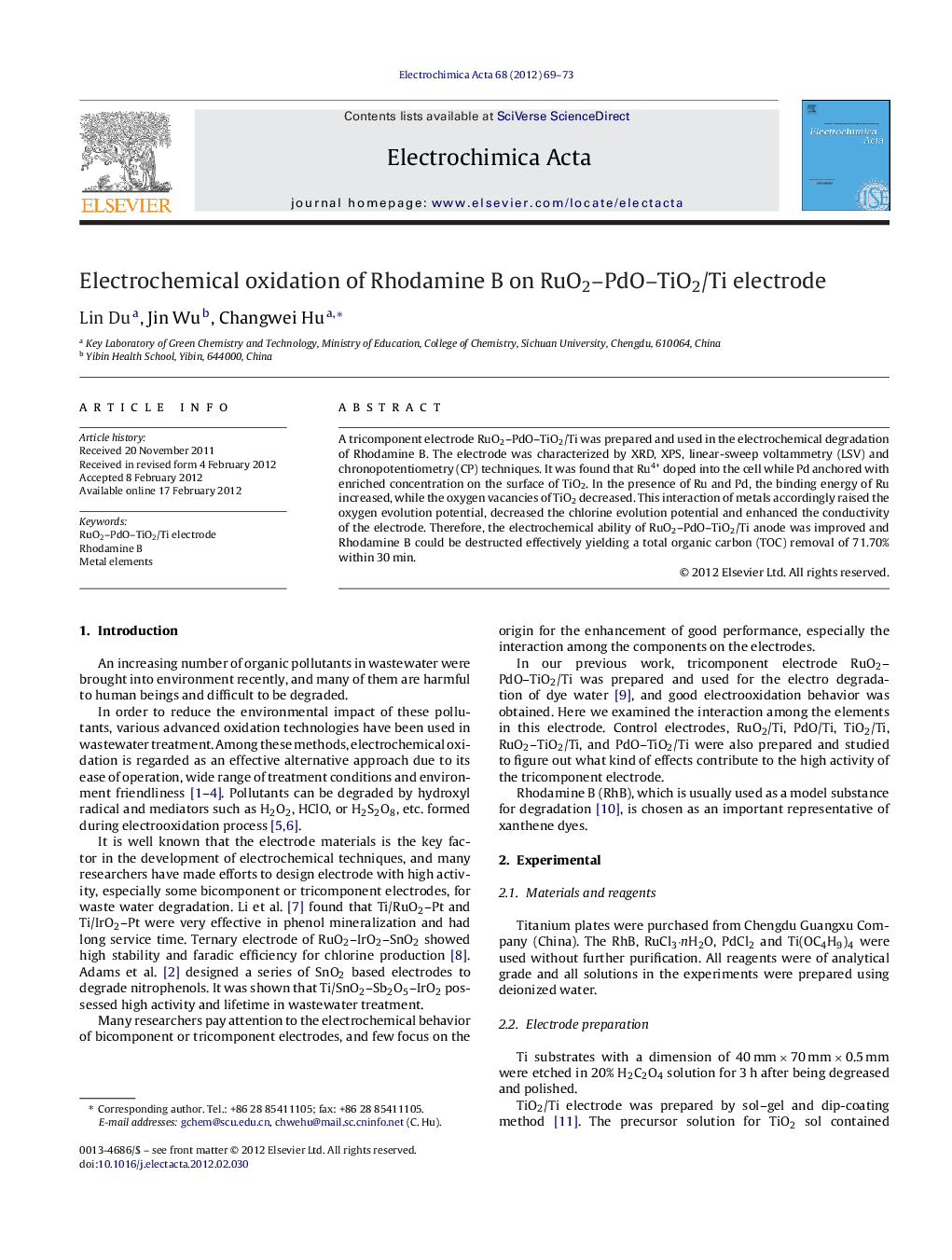| Article ID | Journal | Published Year | Pages | File Type |
|---|---|---|---|---|
| 188684 | Electrochimica Acta | 2012 | 5 Pages |
A tricomponent electrode RuO2–PdO–TiO2/Ti was prepared and used in the electrochemical degradation of Rhodamine B. The electrode was characterized by XRD, XPS, linear-sweep voltammetry (LSV) and chronopotentiometry (CP) techniques. It was found that Ru4+ doped into the cell while Pd anchored with enriched concentration on the surface of TiO2. In the presence of Ru and Pd, the binding energy of Ru increased, while the oxygen vacancies of TiO2 decreased. This interaction of metals accordingly raised the oxygen evolution potential, decreased the chlorine evolution potential and enhanced the conductivity of the electrode. Therefore, the electrochemical ability of RuO2–PdO–TiO2/Ti anode was improved and Rhodamine B could be destructed effectively yielding a total organic carbon (TOC) removal of 71.70% within 30 min.
Graphical abstractTricomponent RuO2–PdO–TiO2/Ti electrode possesses high oxygen evolution potential, low chlorine evolution potential and good conductivity which improves the electrochemical ability in Rhodamine B degradation.Figure optionsDownload full-size imageDownload as PowerPoint slideHighlights► Ru4+ doped into the TiO2 cell while the effective element Pd anchored on the surface. ► More positive charges and decreased oxygen vacancy on RuO2–PdO–TiO2/Ti electrode. ► The oxygen evolution potential increased and that for chlorine reduced. ► 71.7% TOC removal for Rhodamine B degradation.
